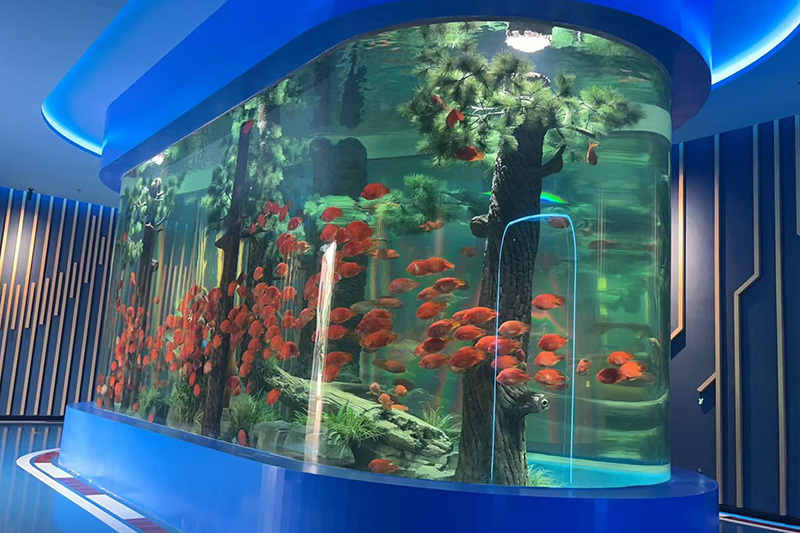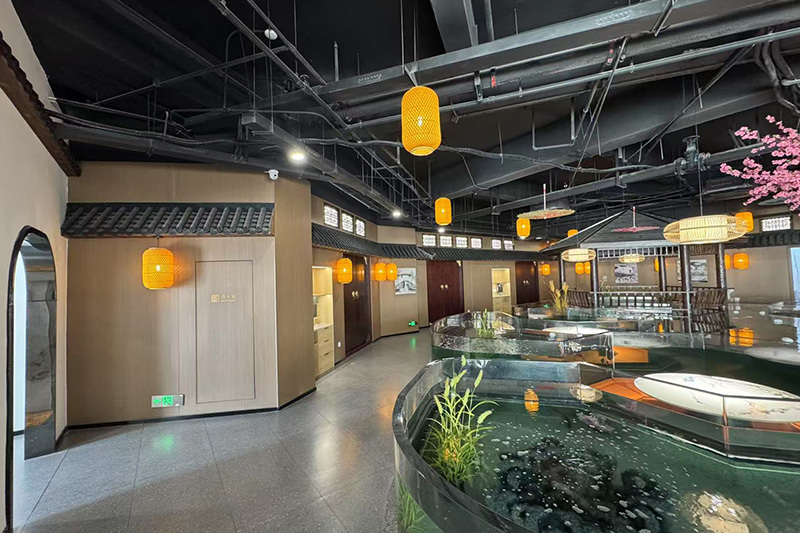
The Versatility of Acrylic Cylinders in Aquaculture Applications
Acrylic cylinders, known for their optical clarity and resistance to impact, serve numerous purposes in aquaculture. Their lightweight nature and ease of fabrication make them an attractive choice for creating tanks, enclosures, and storage solutions. When it comes to maintaining optimal conditions for aquatic life, the clear visibility offered by acrylic allows for easy monitoring of the system,
Release time:
2025-11-14
Acrylic cylinders, known for their optical clarity and resistance to impact, serve numerous purposes in aquaculture. Their lightweight nature and ease of fabrication make them an attractive choice for creating tanks, enclosures, and storage solutions. When it comes to maintaining optimal conditions for aquatic life, the clear visibility offered by acrylic allows for easy monitoring of the system, ensuring that fish and other organisms thrive in a controlled environment.
One of the most significant advantages of acrylic cylinders is their durability. Unlike glass, which can shatter easily, acrylic is resistant to breakage and can withstand harsh environmental conditions commonly found in aquaculture settings. This attribute not only enhances safety but also reduces replacement costs over time. The versatility of acrylic means it can be molded into various shapes and sizes, catering to specific needs in fish farming and other aquaculture practices.
In addition to their physical benefits, acrylic cylinders are also beneficial for sustainability. They can be designed for recirculating aquaculture systems (RAS), where water quality is critical. By utilizing acrylic cylinders in RAS, operators can optimize water flow and filtration, leading to improved overall health of fish populations. The transparent nature of acrylic also allows for efficient lighting, which is essential for the growth of beneficial microorganisms that aid in the aquaculture process.
Another key benefit of acrylic cylinders is their chemical resistance. They can withstand exposure to various chemicals used in aquaculture without degrading. This characteristic ensures that water quality remains stable, critical for the health of aquatic organisms. Furthermore, acrylic materials can be treated with UV stabilizers to enhance their longevity, making them suitable for both indoor and outdoor applications.
When considering acrylic cylinders for aquaculture, it's essential to assess the specific requirements of your setup. Factors such as size, shape, and intended use will dictate the best configuration of acrylic materials. Proper installation and maintenance play a pivotal role in maximizing the benefits of acrylic cylinders, ensuring that they contribute positively to the efficiency of the aquaculture system.
In summary, acrylic cylinders represent a modern solution for various applications in aquaculture. Their durability, clarity, and resistance to chemicals make them an ideal choice for agricultural and food industries focusing on facility agriculture and fisheries. As the demand for sustainable aquaculture practices grows, the role of acrylic cylinders in enhancing operational efficiency and productivity becomes increasingly vital. Embracing these innovations can lead to more sustainable practices and a healthier aquatic ecosystem.
One of the most significant advantages of acrylic cylinders is their durability. Unlike glass, which can shatter easily, acrylic is resistant to breakage and can withstand harsh environmental conditions commonly found in aquaculture settings. This attribute not only enhances safety but also reduces replacement costs over time. The versatility of acrylic means it can be molded into various shapes and sizes, catering to specific needs in fish farming and other aquaculture practices.
In addition to their physical benefits, acrylic cylinders are also beneficial for sustainability. They can be designed for recirculating aquaculture systems (RAS), where water quality is critical. By utilizing acrylic cylinders in RAS, operators can optimize water flow and filtration, leading to improved overall health of fish populations. The transparent nature of acrylic also allows for efficient lighting, which is essential for the growth of beneficial microorganisms that aid in the aquaculture process.
Another key benefit of acrylic cylinders is their chemical resistance. They can withstand exposure to various chemicals used in aquaculture without degrading. This characteristic ensures that water quality remains stable, critical for the health of aquatic organisms. Furthermore, acrylic materials can be treated with UV stabilizers to enhance their longevity, making them suitable for both indoor and outdoor applications.
When considering acrylic cylinders for aquaculture, it's essential to assess the specific requirements of your setup. Factors such as size, shape, and intended use will dictate the best configuration of acrylic materials. Proper installation and maintenance play a pivotal role in maximizing the benefits of acrylic cylinders, ensuring that they contribute positively to the efficiency of the aquaculture system.
In summary, acrylic cylinders represent a modern solution for various applications in aquaculture. Their durability, clarity, and resistance to chemicals make them an ideal choice for agricultural and food industries focusing on facility agriculture and fisheries. As the demand for sustainable aquaculture practices grows, the role of acrylic cylinders in enhancing operational efficiency and productivity becomes increasingly vital. Embracing these innovations can lead to more sustainable practices and a healthier aquatic ecosystem.
Acrylic cylinder
Previous Page
Previous Page
Latest information





